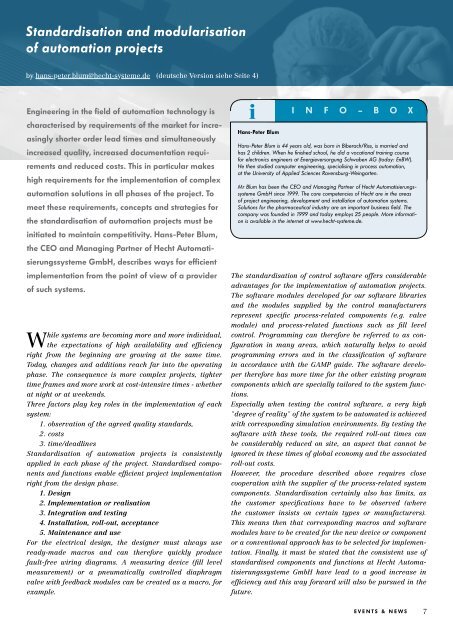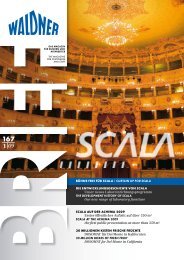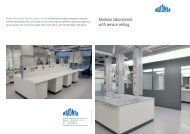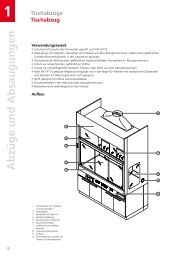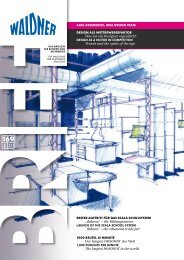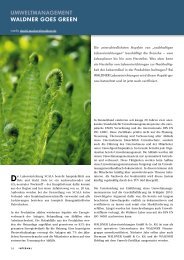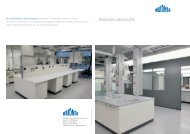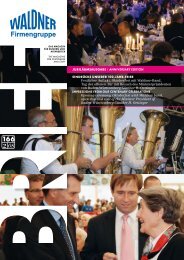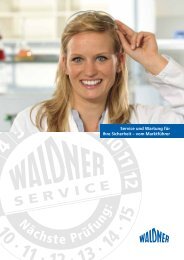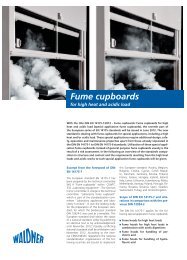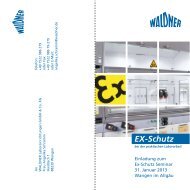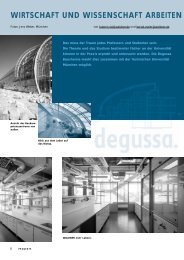Nr. 168.pdf - Waldner Firmengruppe
Nr. 168.pdf - Waldner Firmengruppe
Nr. 168.pdf - Waldner Firmengruppe
Sie wollen auch ein ePaper? Erhöhen Sie die Reichweite Ihrer Titel.
YUMPU macht aus Druck-PDFs automatisch weboptimierte ePaper, die Google liebt.
Standardisation and modularisation<br />
of automation projects<br />
by hans-peter.blum@hecht-systeme.de (deutsche Version siehe Seite 4)<br />
Engineering in the field of automation technology is<br />
characterised by requirements of the market for increasingly<br />
shorter order lead times and simultaneously<br />
increased quality, increased documentation requirements<br />
and reduced costs. This in particular makes<br />
high requirements for the implementation of complex<br />
automation solutions in all phases of the project. To<br />
meet these requirements, concepts and strategies for<br />
the standardisation of automation projects must be<br />
initiated to maintain competitivity. Hans-Peter Blum,<br />
the CEO and Managing Partner of Hecht Automatisierungssysteme<br />
GmbH, describes ways for efficient<br />
implementation from the point of view of a provider<br />
of such systems.<br />
While systems are becoming more and more individual,<br />
the expectations of high availability and efficiency<br />
right from the beginning are growing at the same time.<br />
Today, changes and additions reach far into the operating<br />
phase. The consequence is more complex projects, tighter<br />
time frames and more work at cost-intensive times - whether<br />
at night or at weekends.<br />
Three factors play key roles in the implementation of each<br />
system:<br />
1. observation of the agreed quality standards,<br />
2. costs<br />
3. time/deadlines<br />
Standardisation of automation projects is consistently<br />
applied in each phase of the project. Standardised components<br />
and functions enable efficient project implementation<br />
right from the design phase.<br />
1. Design<br />
2. Implementation or realisation<br />
3. Integration and testing<br />
4. Installation, roll-out, acceptance<br />
5. Maintenance and use<br />
For the electrical design, the designer must always use<br />
ready-made macros and can therefore quickly produce<br />
fault-free wiring diagrams. A measuring device (fill level<br />
measurement) or a pneumatically controlled diaphragm<br />
valve with feedback modules can be created as a macro, for<br />
example.<br />
i<br />
i n f o – b o x<br />
Hans-Peter Blum<br />
Hans-Peter Blum is 44 years old, was born in Biberach/Riss, is married and<br />
has 2 children. When he finished school, he did a vocational training course<br />
for electronics engineers at Energieversorgung Schwaben AG (today: EnBW).<br />
He then studied computer engineering, specialising in process automation,<br />
at the University of Applied Sciences Ravensburg-Weingarten.<br />
Mr Blum has been the CEO and Managing Partner of Hecht Automatisierungssysteme<br />
GmbH since 1999. The core competencies of Hecht are in the areas<br />
of project engineering, development and installation of automation systems.<br />
Solutions for the pharmaceutical industry are an important business field. The<br />
company was founded in 1999 and today employs 25 people. More information<br />
is available in the internet at www.hecht-systeme.de.<br />
The standardisation of control software offers considerable<br />
advantages for the implementation of automation projects.<br />
The software modules developed for our software libraries<br />
and the modules supplied by the control manufacturers<br />
represent specific process-related components (e.g. valve<br />
module) and process-related functions such as fill level<br />
control. Programming can therefore be referred to as configuration<br />
in many areas, which naturally helps to avoid<br />
programming errors and in the classification of software<br />
in accordance with the GAMP guide. The software developer<br />
therefore has more time for the other existing program<br />
components which are specially tailored to the system functions.<br />
Especially when testing the control software, a very high<br />
"degree of reality" of the system to be automated is achieved<br />
with corresponding simulation environments. By testing the<br />
software with these tools, the required roll-out times can<br />
be considerably reduced on site, an aspect that cannot be<br />
ignored in these times of global economy and the associated<br />
roll-out costs.<br />
However, the procedure described above requires close<br />
cooperation with the supplier of the process-related system<br />
components. Standardisation certainly also has limits, as<br />
the customer specifications have to be observed (where<br />
the customer insists on certain types or manufacturers).<br />
This means then that corresponding macros and software<br />
modules have to be created for the new device or component<br />
or a conventional approach has to be selected for implementation.<br />
Finally, it must be stated that the consistent use of<br />
standardised components and functions at Hecht Automatisierungssysteme<br />
GmbH have lead to a good increase in<br />
efficiency and this way forward will also be pursued in the<br />
future.<br />
Events & News<br />
7


